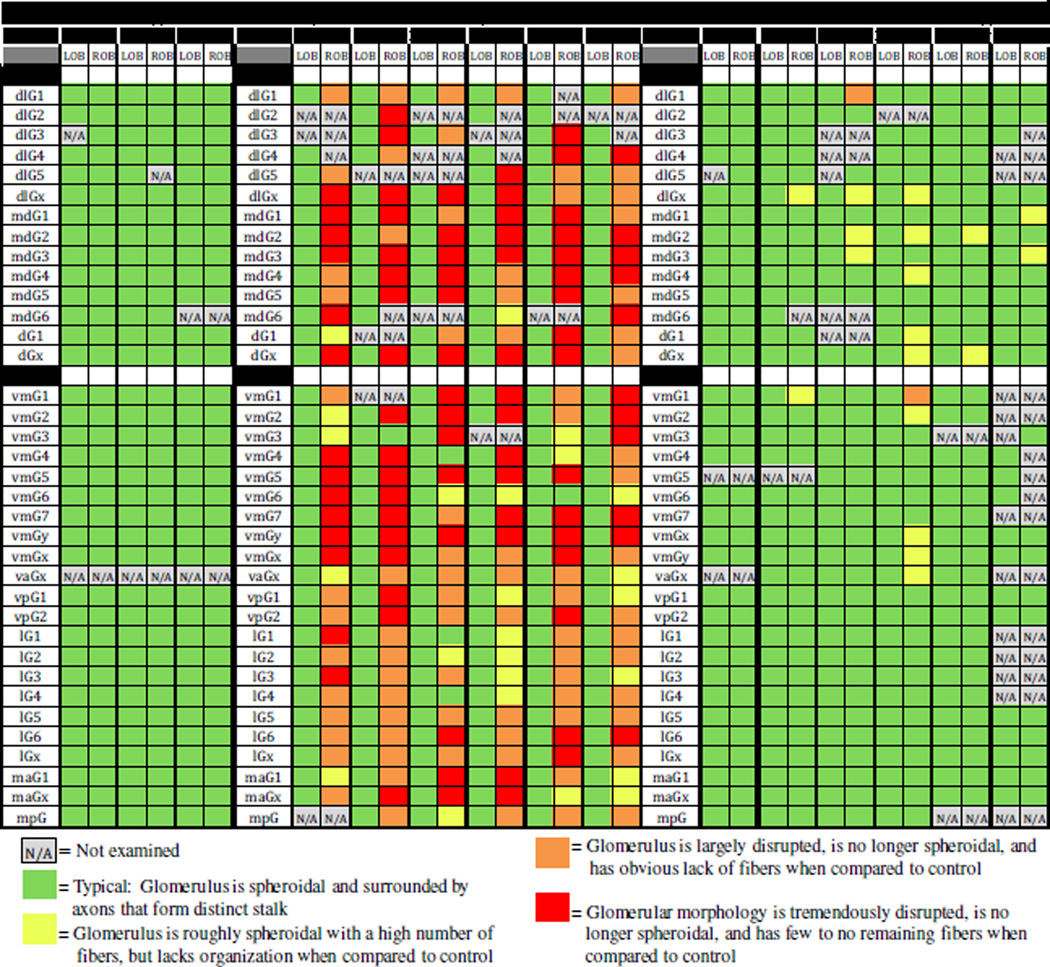Figure 4.
Analysis of glomerular distribution in the olfactory bulb after a single dose of Triton X-100 to the olfactory organ. The glomerular map was used to identify individual glomeruli and glomerular clusters, and each glomerulus was given a color rating based on presence and completeness, using multiple views. Glomeruli that could not be identified in a given specimen were not examined (N/A). In untreated control fish, all identified glomeruli in the left (LOB) and right (ROB) olfactory bulbs consisted of a bundle of axons forming a distinct stalk and dispersing into a spheroid. Fish examined 4 days after detergent treatment had glomeruli with varying degrees of morphological disruption on the treated side (ROB); the internal control side (LOB) had glomerular morphology consistent with untreated control fish. The treated side (ROB) of fish examined 7 days after detergent treatment was more similar to untreated control fish, although a few glomeruli still displayed some lack of organization; the internal control side (LOB) had glomeruli with a normal appearance.

